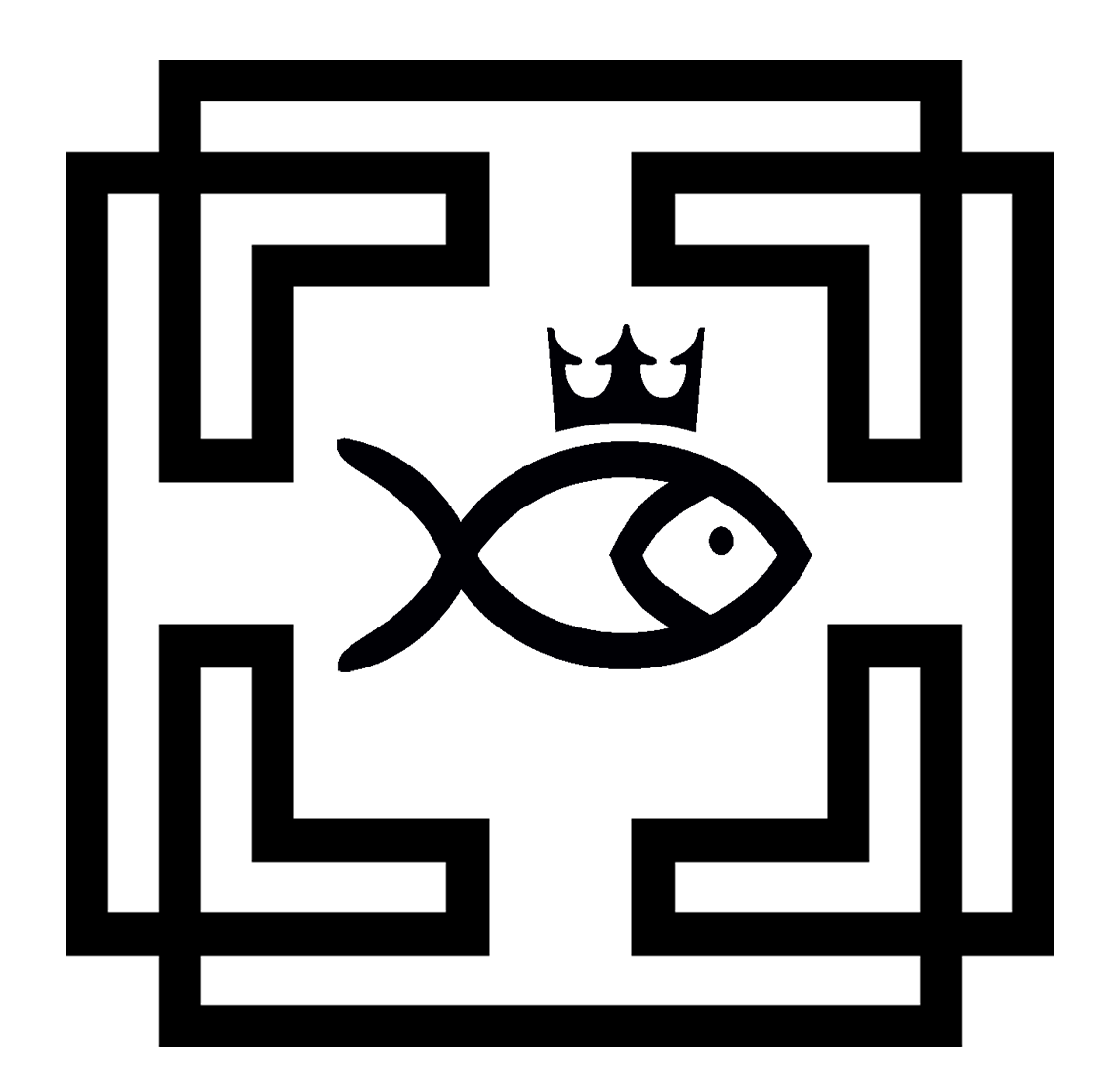Your basket is currently empty!
Sapta Matrika

The Seven Mothers of Creation

🔱
Matrika means mother and refers to a group of seven goddesses who are typically depicted together. They are believed to originally personify the Seven Sisters of the Pleiades star cluster, and are revered as the primal mothers of creation. As a collective, the Matrikas embody the feminine principle of Prakṛti, the dynamic counterpart to Puruṣa, the passive consciousness.
According to one account of their origin, the Matrikas arose from the very bodies of the gods as Śaktis, summoned to aid the great Mahādevī in her battle against the formidable demons Śumbha and Niśumbha. These fierce goddesses bore the same weapons, adorned themselves with the same ornaments, and rode the same noble vehicles, vāhanas, as the deities who called them forth. Among them shines Cāmuṇḍā, the fierce and unrelenting manifestation of the Goddess’s supreme power.
The order of the Matrikas mirrors the eternal cycle of existence — creation, preservation, dissolution, and the final liberation beyond the grasp of time.
- Brāhmaṇī initiates the great cosmic play, bringing creation into being.
- Vaiṣṇavī infuses this creation with symmetry, beauty, and perfect order.
- Māhēśvarī breathes life and individuality into the world, granting beings their own unique spirit.
- Kaumārī inspires aspiration, the yearning to grow, evolve, and reach beyond.
- Varāhī empowers the soul with the fierce drive to seek fulfillment and to enjoy the fruits of life.
- Indrāṇī establishes sovereignty, standing firm against chaos and guarding the sacred order.
- Cāmuṇḍā, the terrible and compassionate, annihilates delusion and dissolves evil, opening the way for true spiritual awakening.
The Matrikas are also revered as the subtle forces behind every vibration of sound. It is from their divine essence that syllables, words, and language arise — weaving the mantras that hold the universe together. Through the ritual of Matrika Nyāsa, the fifty letters of the Sanskrit alphabet are placed upon the practitioner’s body and within the petals of the chakras, sanctifying the seeker and aligning them with the Mother’s cosmic pulse.
Brāhmaṇī
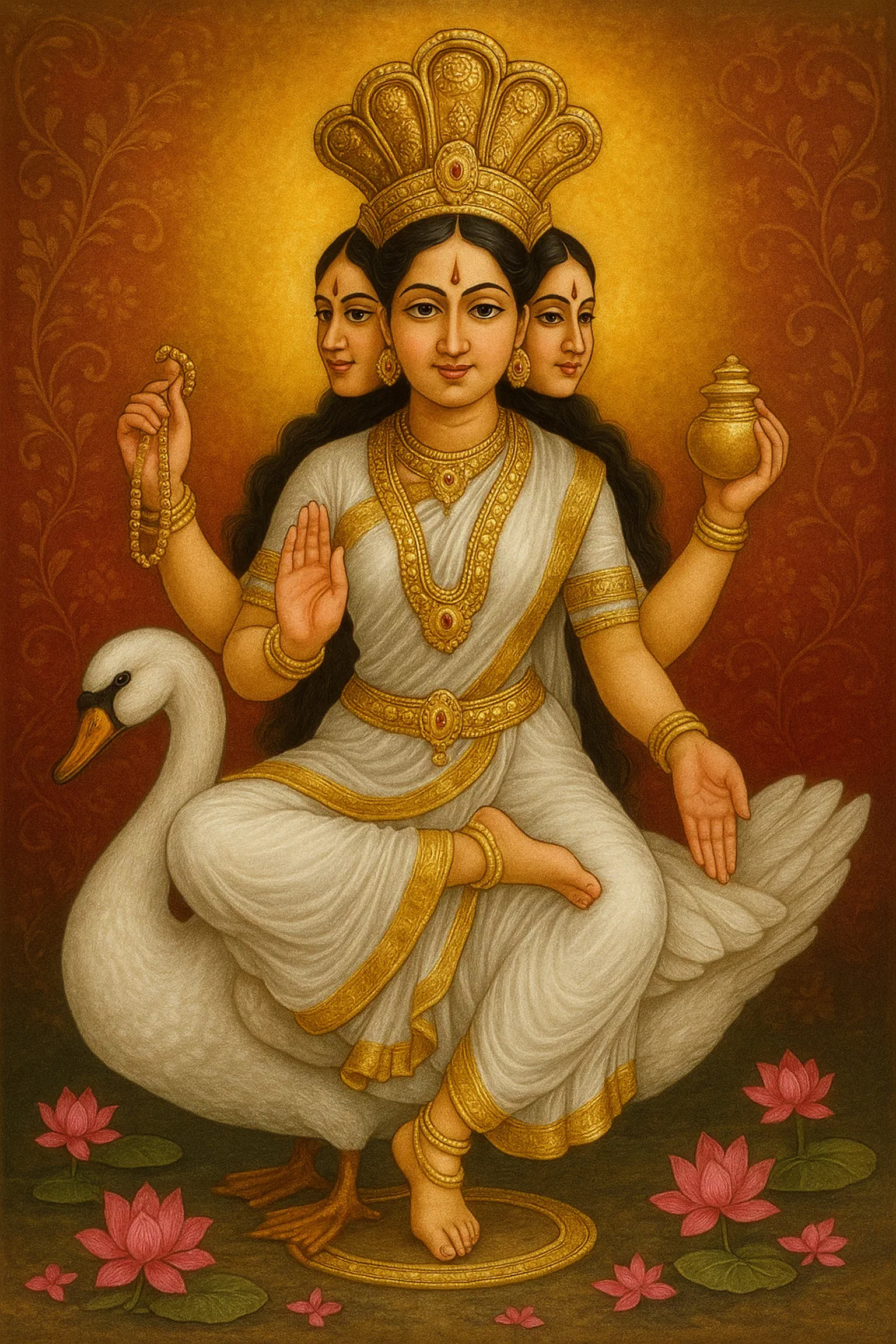
Goddess of Creativity
Brāhmaṇī is the Śakti of Brahmā and her vehicle is a swan, Haṃsa, symbolising wisdom, purity, and the ability to discern truth from illusion.
She embodies the creative and nurturing aspects and is associated with the pursuit of learning and intellectual growth.
Oṁ Hrīṁ
Brāhmanāyai Namahā
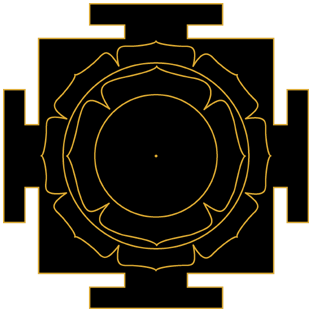
Vaiṣṇāvī
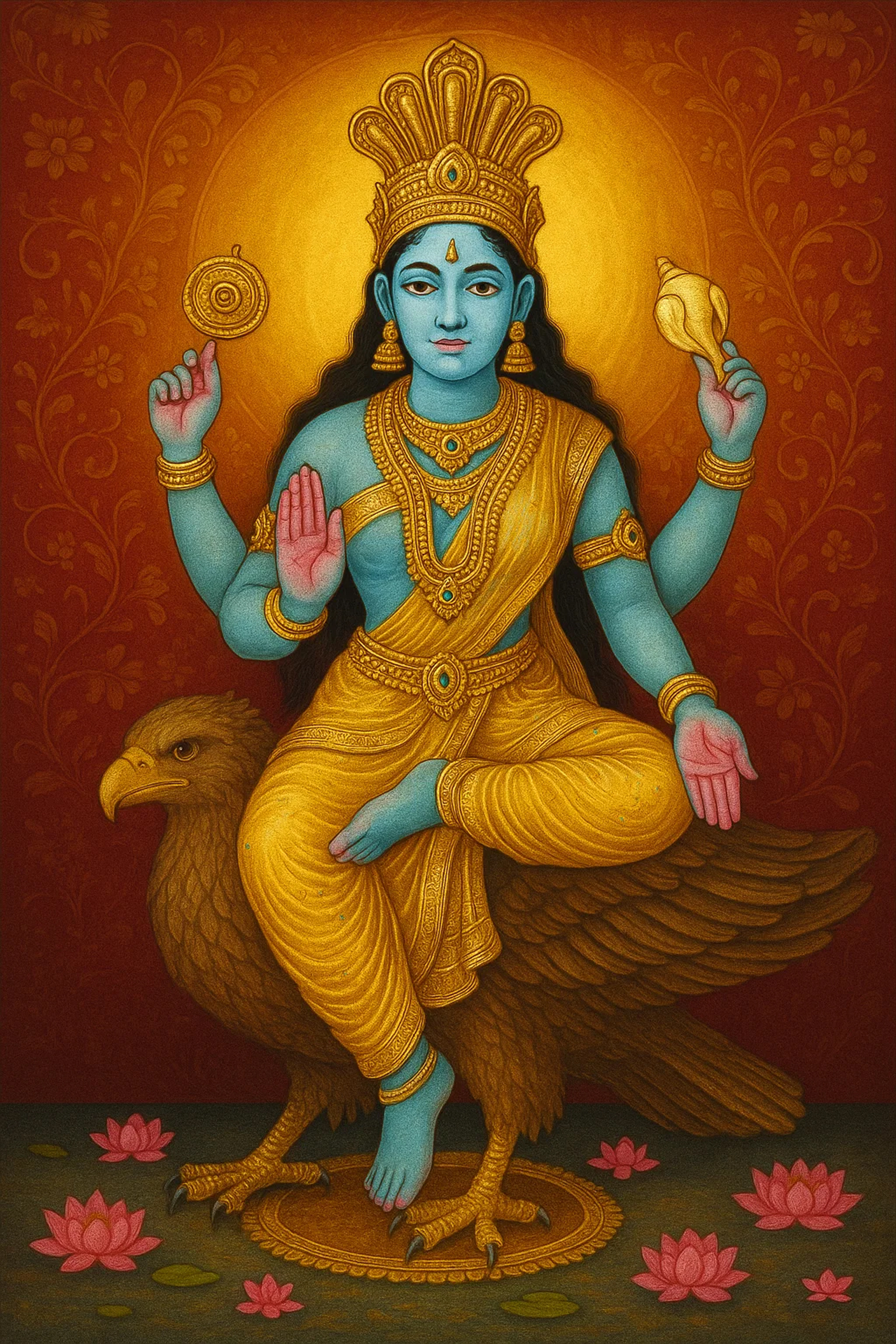
Goddess of Devotion
As Viṣṇu’s dynamic energy, Vaiṣṇavī embodies the principles of preservation, compassion, righteousness, and cosmic order (dharma).
She is typically depicted riding Garuḍa, the mighty eagle, symbolising swiftness and divine vision.
Invoked for protection, especially from injustice, deceit, and spiritual downfall.
Oṁ Klīṁ
Vaiṣṇāvāyai Namahā

Māhēśvarī
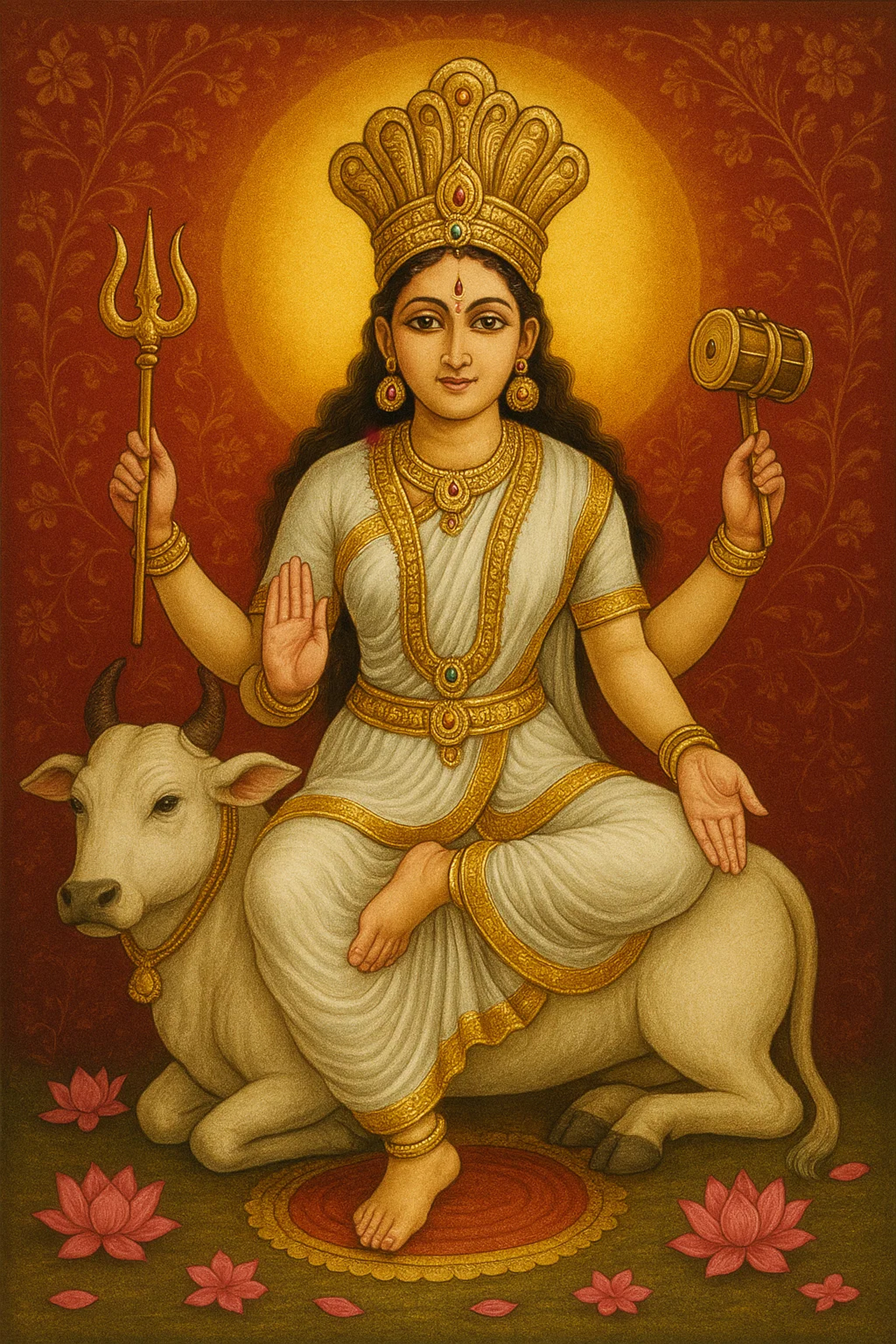
Goddess of Divine Motherhood
She is the feminine counterpart of Maheśvara (Śiva) and represents his creative, destructive, and transformational power in the form of a Divine Mother.
Her mount is Nandi, the sacred bull, who symbolises strength, stability, patience, and devotion.
Māhēśvarī holds the cosmic womb (yoni) from which both creation and destruction arise. She represents the uncompromising love of a mother who both nurtures and disciplines.
She is invoked for protection, courage and deep inner transformation.
Om Hrīṁ Śrīṁ Krīṁ
Parameśhwarāyai Namahā
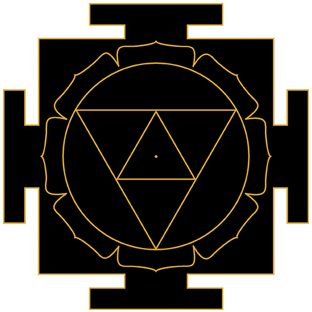
Kaumārī

Goddess of Youth
As the feminine counterpart of Kumāra (Kārtikeya), the god of war, She personifies Kriyā Śakti – the dynamic energy of purposeful action and focused effort.
She is typically depicted as a young, radiant warrior maiden seated on a peacock, symbolising Her mastery over ego and pride, and wielding martial weapons.
Her presence inspires clarity of purpose, discipline and courage.
Oṁ Klīṁ
Kaumārāyai Namahā
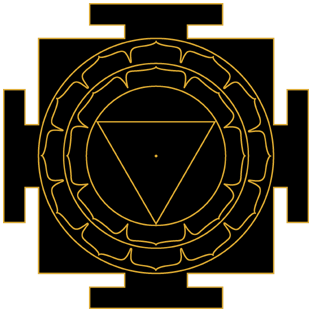
Varāhī

Goddess of Strength
She is the fierce and formidable Śakti of Varāha, the boar-headed incarnation of Viṣṇu.
Her boar face indicates primal power — the ability to uproot ignorance and darkness.
She is typically depicted riding a buffalo, showing Her mastery over tamas (inertia and ignorance).
As a guardian of hidden knowledge and occult wisdom, she is invoked for strength, courage, protection, and the power to overcome deep-rooted karmic obstacles.
Oṁ Hrūm
Varāhāyai Namahā
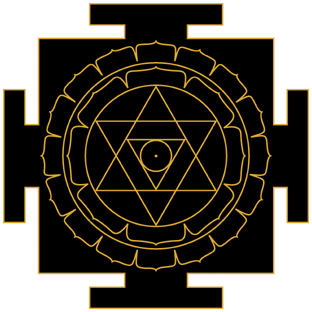
Indrāṇī
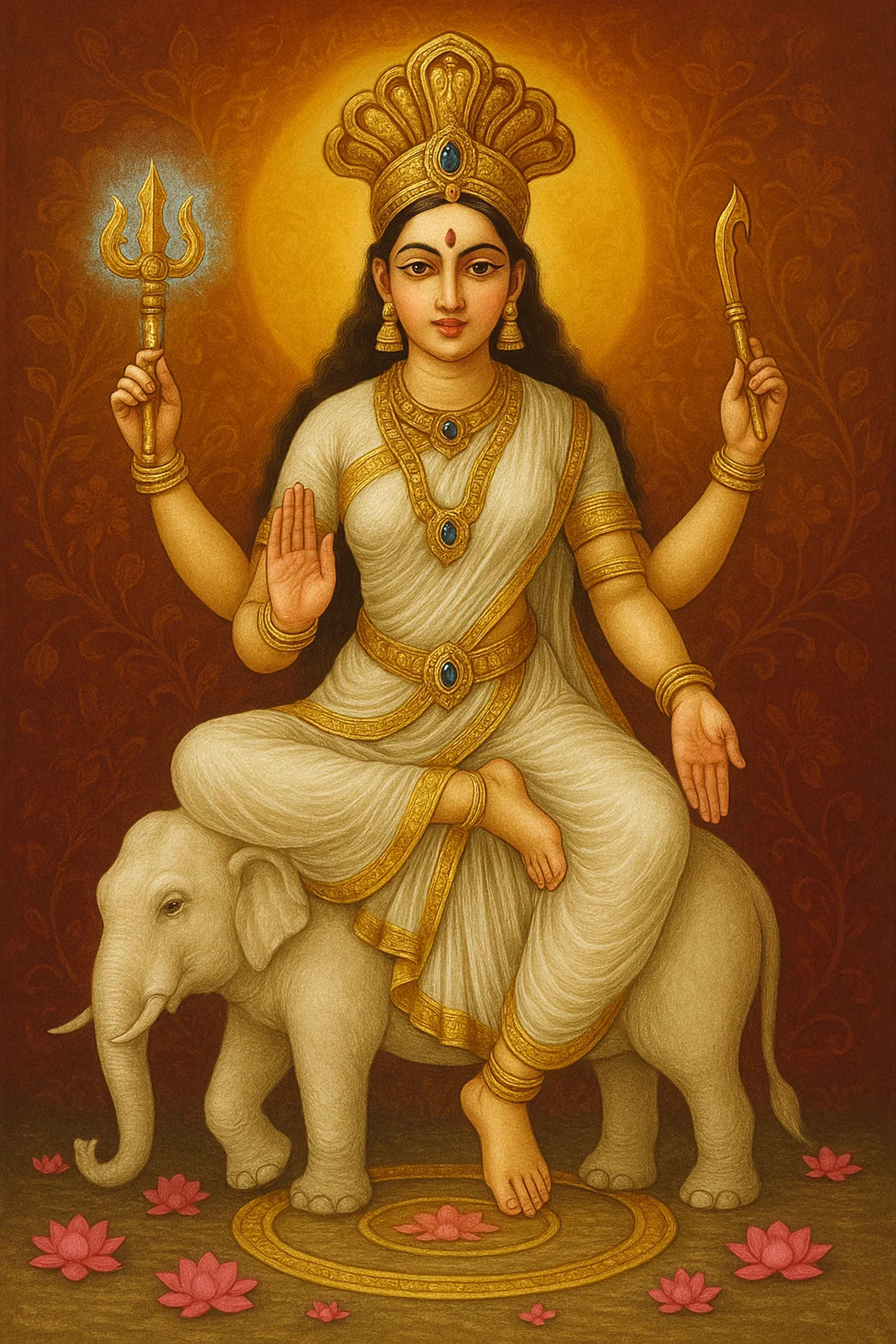
Queen of the Heavens
Indrāṇī is the Śakti of Indra, king of the gods and ruler of the heavens, and is the embodiment of divine sovereignty.
She is typically depicted seated majesticly on a white elephant (Airāvata – king of elephants), who has command over the skies and storms.
Invoked for clarity of judgment and divine protection from chaos or disorder.
Oṁ Huṁ
Indrāṇāyai Namahā
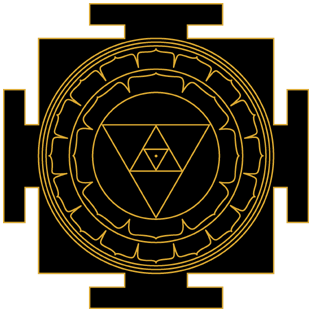
Cāmuṇḍā
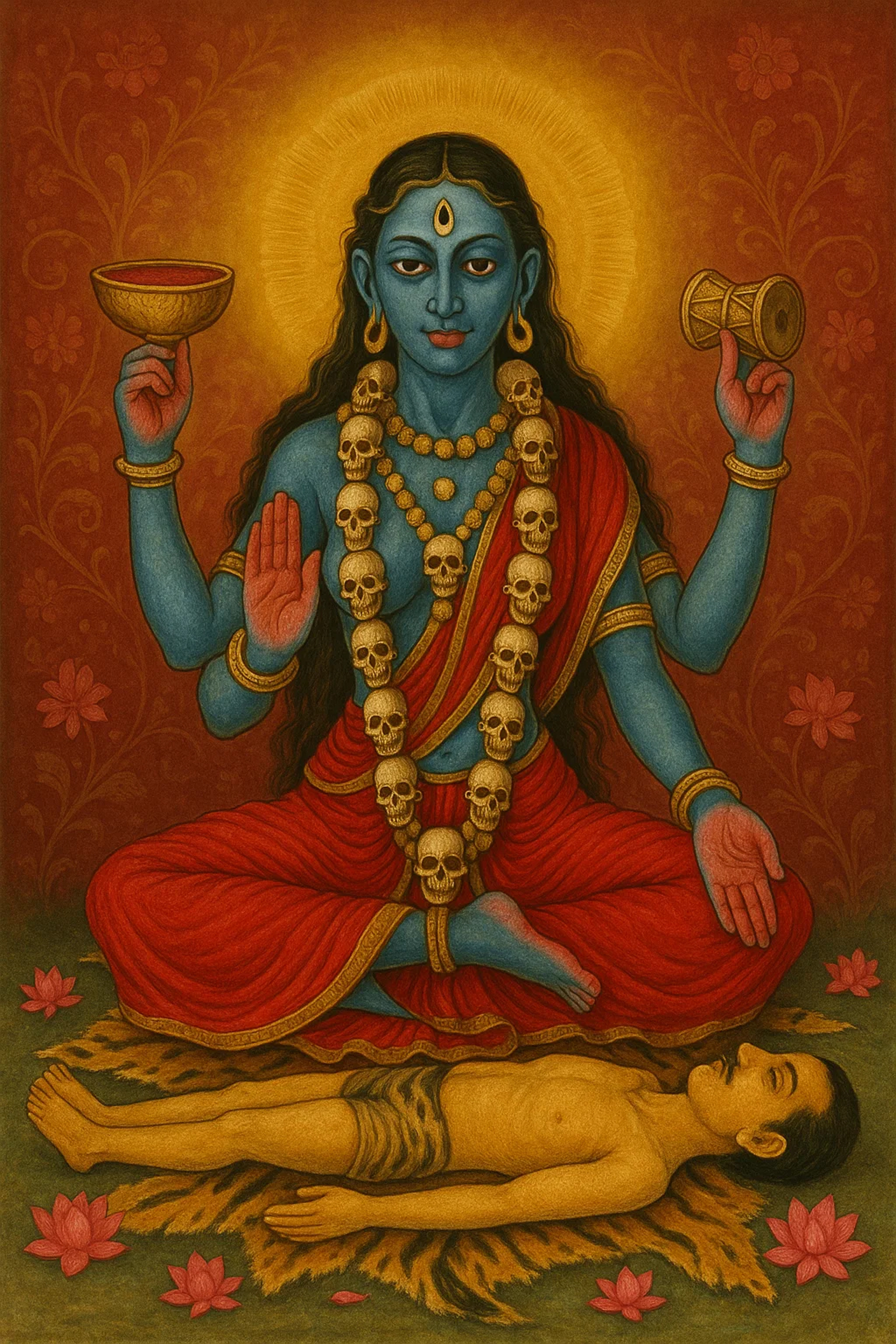
Goddess of Rebirth
Unlike the other Matrikas, Cāmuṇḍā is an independent goddess. Her name comes from the words Caṇḍa and Muṇḍa, two powerful demons whom she vanquished in battle.
Known for her terrifying form and protective energy, she is both feared and revered. She resides in cremation grounds and is depicted dressed in red garments with a very emaciated body.
She is pure, untamed power, embodying the ferocity needed for transformation and purification.
Oṁ Aiṁ Hrīṁ Klīṁ
Cāmuṇḍāyai Vicche Svāhā

